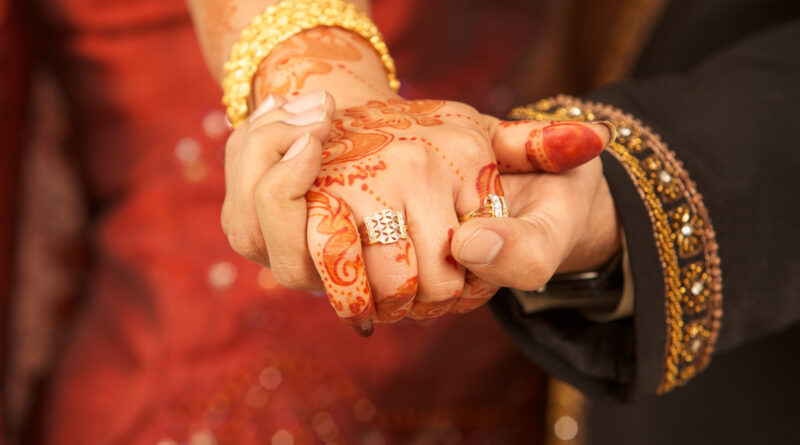The Social Burden of Marriage on Kashmiri Women | Dowry, Pressure & Cultural Change
By: Javid Amin | 15 October 2025
Marriage in Kashmir: A Celebration with a Hidden Weight
In the lush valleys of Jammu and Kashmir, marriage has long been seen as a sacred institution—a blending of spiritual belief, cultural tradition, and familial bonding. The solemnity of the nikah, the elegance of the bride’s attire, the aroma of wazwan, and the warmth of shared laughter reflect the community’s deep-rooted values of togetherness.
But beneath this ceremonial grandeur, many Kashmiri women face a reality rarely spoken aloud—a weight of expectations, economic strain, and silent emotional battles. Marriage, once a personal choice or spiritual duty, has morphed into a societal performance, often leaving women with limited agency over their own futures.
“Marriage in Kashmir is no longer just about love or companionship—it’s about survival, status, and silence.”
— Wasim Kakroo, Psychologist
From Sunnah to Spectacle: When Simplicity Turned into Show
Marriage in Islam, particularly under the guidance of the Prophet’s Sunnah, is intended to be simple, blessed, and rooted in sincerity. But over the decades, Kashmiri society has seen a cultural shift from simplicity to spectacle.
Weddings have become status symbols. Families now compete over:
-
Lavish décor and elaborate venues
-
Multi-day wazwan feasts and high guest counts
-
Dowry and gifting expectations
-
Bridal jewelry and designer outfits
-
Expensive vehicle processions and wedding bands
For middle- and lower-income families, these expectations translate into crushing financial debt. Many sell ancestral land, borrow money, or spend years saving to “match society’s standard.”
“We wanted a simple nikah, but people asked—what will others say? So we ended up with a wedding we couldn’t afford,” says a mother from Anantnag.
This social comparison trap not only depletes family resources but turns marriage into a financial transaction, where the woman’s worth is measured against gifts, gold, and the scale of the celebration.
Invisible Pressures on Women: Expectations That Never End
While financial strain hits entire families, the emotional and psychological weight falls heaviest on women.
Kashmiri brides often carry invisible burdens:
-
Dowry & Gift Expectations: Women are often judged by what their families give. The more “gifts” or property, the more they are “respected” in the in-laws’ home.
-
Social Judgment: Women face harsh scrutiny for delayed marriages, broken engagements, or being divorced or widowed.
-
Adjustment Pressure: Once married, they are expected to seamlessly adapt to new households, often with minimal autonomy.
-
Limited Choice: Many women still have little say in choosing their partners or negotiating marriage terms.
A report by Kashmir Observer Folio revealed how these pressures shape women’s identities from a young age. Many girls are raised with the underlying message that marriage is their ultimate destination, overshadowing education, career, or personal ambitions.
“I was told not to study too much—no one marries a girl who talks back or earns more than her husband,” recalls Shazia, a 28-year-old from Srinagar.
Delayed Marriages: The Unspoken Stigma
The average age of marriage for women in Kashmir has gradually increased, reflecting shifts in education, urbanization, and personal choice. But while this can signal empowerment, it has also triggered societal backlash.
In Kashmiri society, unmarried women in their late 20s or early 30s are often subjected to:
-
Gossip and community speculation
-
Internalized guilt and pressure
-
Family anxiety and overprotectiveness
-
Diminished “value” in arranged marriage negotiations
Marriage is still seen as a marker of adulthood, stability, and social respect. A woman who remains single, by choice or circumstance, often faces judgment as “incomplete.”
Psychologists and counselors across the Valley report rising cases of anxiety, identity conflict, and low self-worth among women navigating delayed marriages. Some even accept unsuitable proposals just to escape the stigma.
“Every wedding in the mohalla is a reminder that I’m ‘late.’ It’s exhausting,” says a 31-year-old teacher from Budgam.
Dowry and Cultural Coercion: A Systemic Trap
Despite being illegal under the Dowry Prohibition Act, dowry practices remain deeply embedded in Kashmiri weddings.
What’s more, dowry isn’t always demanded outright. It is coded in language and expectation:
-
“It’s your daughter’s wedding, you’ll obviously give something.”
-
“We didn’t ask—but they gave out of love.”
-
“People will talk if we don’t match their standard.”
Families that cannot meet these expectations face humiliation. Daughters face whispered insults or worse—marital discord and emotional abuse.
Sociologists warn that dowry is not just an economic issue, but a power dynamic—one that places women and their families in a subordinate position even before the marriage begins.
Marriage as Emotional Labour
Marriage for Kashmiri women is often not just about companionship; it’s about performing multiple roles to keep the marriage “respectable” in the eyes of society:
-
Caregiver for in-laws
-
Cook and household manager
-
Cultural representative at social events
-
Silent absorber of emotional or verbal abuse
Women are expected to “adjust,” “compromise,” and “be patient,” often at the cost of their own well-being.
Many educated women who once dreamed of careers and independence find themselves negotiating every personal choice, from clothing to career decisions, after marriage.
This emotional labour remains invisible, rarely acknowledged, and almost never shared equally.
The Economics of Kashmiri Weddings: A Burden on All
Behind the glitter of Kashmiri weddings lies an economic chain reaction.
-
Families often spend ₹10 to ₹25 lakh or more on weddings.
-
Many take loans or sell land to finance the celebration.
-
Lower-income families face decades of debt.
-
Young men delay marriage until they can afford the “expected” expenses.
-
Local businesses thrive—but at the cost of family savings.
Economists note that marriage inflation—the rising cost of ceremonies—has created a dangerous cycle of debt and competition.
“The problem is not just dowry; it’s the culture of showing off,” says Dr. Farhat Ahmad, a sociologist at University of Kashmir.
Media, Tradition & Social Pressure
Media and social media play a powerful role in shaping what is considered an “ideal wedding.”
-
Instagram wedding reels show extravagant decor, jewelry, and outfits.
-
Local coverage focuses more on spectacle than substance.
-
Community discussions normalize luxury as the baseline.
Traditionalists argue this reflects “Kashmir’s cultural beauty,” but many youth see it as social pressure in disguise.
Some Islamic scholars and community leaders have begun advocating for simple weddings in line with the Prophet’s Sunnah. However, their voices are often drowned out by the louder narrative of “what people will say.”
When Marriage Collides with Mental Health
Psychologists across Kashmir have observed a sharp rise in anxiety, depression, and trauma linked directly or indirectly to marriage-related pressures.
-
Pre-marriage: Anxiety over delayed marriage, societal gossip, and family pressure.
-
During marriage: Emotional burden, fear of judgment, and adjustment struggles.
-
Post-marriage: Unmet expectations, strained relationships, and identity conflict.
Women with dreams of higher education or professional careers are often forced into emotionally taxing compromises.
“The real trauma isn’t just in bad marriages—it’s in marriages that look perfect to society but silently drain women of their identity,” explains psychologist Wasim Kakroo.
Voices of Change: Women Speaking Out
In recent years, a growing number of Kashmiri women have begun breaking the silence through:
-
Personal essays and blogs
-
Spoken word poetry
-
Social media activism
-
Contributions to local news debates
“I wore the bridal outfit they wanted. I smiled for the photos. But inside, I was mourning the version of myself that was disappearing,” wrote one woman in an op-ed for Kashmir Observer.
These testimonies are reshaping the narrative, showing that marriage is not a universal happily-ever-after—it can also be a site of struggle, resilience, and resistance.
Legal Safeguards: Where Law Meets Reality
India’s legal framework provides several protections against dowry and coercion:
-
Dowry Prohibition Act, 1961 – prohibits giving or receiving dowry.
-
Protection of Women from Domestic Violence Act, 2005 – safeguards women from abuse.
-
Muslim Women (Protection of Rights on Marriage) Act, 2019 – provides legal clarity on certain marriage-related issues.
But in practice, reporting dowry harassment or marital abuse is still stigmatized in Kashmir.
-
Families fear “shaming” the woman.
-
Women fear being ostracized or disbelieved.
-
Community elders prioritize “compromise” over justice.
Legal protections exist on paper—but cultural silence often overrides them.
Faith vs. Culture: Returning to the Essence of Nikah
In Islam, marriage is intended to be a blessing, not a burden.
The Prophet Muhammad (PBUH) emphasized simplicity, mutual respect, and emotional support—not opulence.
Yet in Kashmir, cultural expectations often overshadow religious teachings:
| Islamic Principle | Social Practice in Kashmir |
|---|---|
| Simplicity in nikah | Extravagant, expensive weddings |
| No dowry required | Dowry normalized through “gifts” |
| Mutual consent and respect | Social pressure & limited female agency |
| Protection of women’s dignity | Stigma against divorce, delayed marriage, or autonomy |
Religious scholars across the Valley are urging communities to reclaim the spiritual essence of marriage, prioritizing blessings over appearances.
The Intersection of Gender, Power, and Silence
This social burden is not just about weddings. It’s about gender power dynamics embedded in Kashmiri society:
-
Marriage is often seen as a woman’s ultimate role.
-
Her value is tied to marital status, not personal growth.
-
Her worth is measured through how well she “adjusts.”
-
Speaking up is labeled as “rebellious.”
Sociologists call this a “soft control system”—a structure that limits autonomy without overt coercion.
It’s this invisible system that keeps many women silent, even when they are educated, aware, and capable of resistance.
Seeds of Reform: Movements and Initiatives
Despite resistance, change is brewing in pockets of Kashmiri society:
-
Community Pledges for Simple Weddings: Several mosques in Pulwama, Anantnag, and Srinagar have initiated collective pledges to hold nikah ceremonies simply and refuse dowry.
-
Women-led Discussions: NGOs and women’s groups are holding open discussions on marriage, agency, and autonomy.
-
Legal Awareness Drives: Lawyers and social workers are educating women about their rights.
-
Youth Advocacy: Educated young men and women are using social media to question outdated norms.
-
Faith-Based Advocacy: Religious scholars promoting Nikah Sunnah style to normalize simplicity.
These efforts, though still small, are challenging long-held norms and opening space for alternative narratives of marriage.
Storytelling as Resistance
In a culture where women are taught silence as strength, storytelling is becoming a quiet revolution.
-
Spoken word poets share stories of broken expectations.
-
Journalists document real accounts of marital pressure.
-
Digital creators satirize the “big fat Kashmiri wedding.”
-
Academics and students are writing research papers and editorials.
Every story chips away at the wall of silence—and builds a bridge toward collective awareness.
Redefining Success: Beyond Marriage
True social change will only come when marriage stops being the sole marker of a woman’s worth.
Success must be redefined to include:
-
Education and financial independence
-
Personal growth and autonomy
-
Emotional well-being
-
Social contribution
-
Freedom of choice in marriage—or to not marry at all
“A woman’s life does not begin or end at marriage,” says social activist and lawyer Humaira Jan. “Her value is inherent—not conferred by society.”
Editorial Reflection: Where Change Must Begin
The social burden of marriage on Kashmiri women is not an individual problem. It’s a collective cultural design—reinforced by families, communities, religious misinterpretations, and peer pressure.
Reform must begin with:
-
Community Dialogue: Encouraging open discussions on simplifying marriage.
-
Legal Enforcement: Strengthening mechanisms against dowry and coercion.
-
Mental Health Support: Making counseling accessible and stigma-free.
-
Media Responsibility: Shifting narratives from opulence to dignity.
-
Women’s Autonomy: Creating real space for choice, agency, and self-determination.
Change is slow, but it begins with conversation.
Bottom-Line: Marriage as a Choice, Not a Cage
Kashmiri women stand at a crossroads of culture and change.
Between tradition and trauma, between expectations and aspirations, between silence and storytelling—they are rewriting their own narratives.
Marriage can and should be a sacred, dignified union, not a burden of spectacle, pressure, or fear.
The question is not “Will society allow change?”
The question is “When will we stop mistaking pressure for tradition?”




